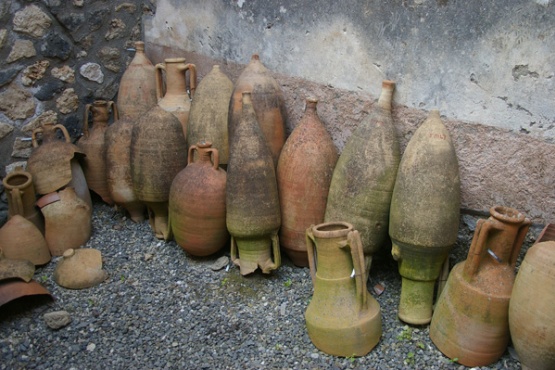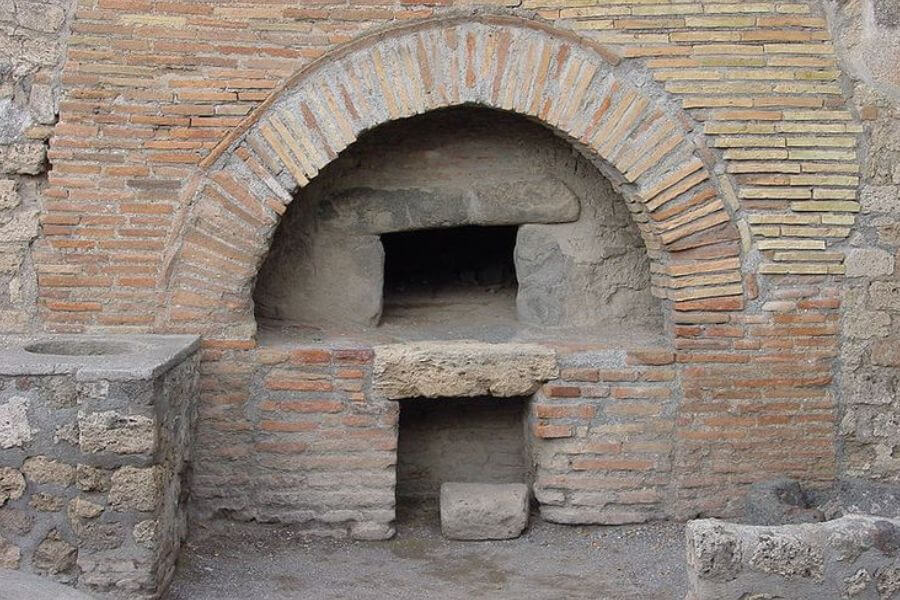The eruption of Mount Vesuvius in 79 AD buried the Roman city of Pompeii, preserving it under layers of ash and pumice. This tragic event inadvertently provided modern archaeologists with a remarkable snapshot of Roman life, including insights into their culinary practices. The discovery of Roman kitchenware in Pompeii offers valuable information about the tools, methods, and social aspects of food preparation in ancient Rome. This article explores the key aspects of Roman kitchenware and how these items reveal the daily lives, cooking techniques, and dietary habits of ancient Romans.
Key Insights into Roman Kitchenware from Pompeii
1. Cooking Pots and Pans
Roman kitchens in Pompeii were equipped with a variety of cooking vessels, each designed for specific culinary tasks.
- Terra Cotta Pots: Many homes contained clay cooking pots, which were versatile for boiling, stewing, or slow-cooking foods. The heat-conducting properties of clay made it ideal for preparing Roman stews, soups, and porridges, allowing for even heat distribution.

- Frying Pans: Metal frying pans, particularly those made from iron, were commonly found in Pompeian kitchens. These shallow pans with long handles were used for grilling or frying meats, fish, and vegetables, demonstrating the Romans’ advanced approach to cooking with heat sources.


- Saucepans: Smaller but deeper cooking vessels were used for sauces, soups, and stews. These could be suspended over open flames, allowing Roman cooks to regulate heat and prepare dishes that required different cooking temperatures.


Grinders and Mortars
Grinding tools were essential in Roman kitchens, reflecting the importance of bread and grains in their diet.
- Mills (Molae): Large, flat stones called molae were used for grinding grains into flour. This indicates that many Pompeians had the means to grind their own flour at home, ensuring a fresh supply for baking. Bread, a staple in the Roman diet, was central to many meals.

- Mortars and Pestles: Made from stone or marble, mortars and pestles were used to grind spices, grains, and herbs. Traces of food residue found on these tools provide direct evidence of the diverse range of ingredients used in Roman cooking, from herbs to grains and spices.


Food Storage Containers
Roman kitchenware also included a variety of storage containers, reflecting the society’s emphasis on food preservation.
- Amphorae: These large ceramic vessels were used to store and transport liquids such as wine, oil, and vinegar. Smaller versions of these vessels were used in homes for daily storage, offering insights into both Roman trade and their sophisticated methods of food preservation.

- Jars (Urns): Glass and ceramic jars were used to store dried foods, salted meats, fish, and vegetables. These jars highlight the Romans’ reliance on long-term food storage, especially for items like salted fish and meats that needed to be preserved for extended periods.

Ovens
Ovens were central to Roman food preparation, particularly in the baking of bread.
- Domed Ovens: Many Pompeian homes had domed ovens made of clay or stone, used primarily for baking bread. These ovens were vital for daily food preparation, as bread was a staple of the Roman diet.

Dining Accessories
Roman dining culture was often communal, and their kitchenware reflects this social aspect.
- Plates and Bowls: Ceramic and metal plates and bowls were used in Roman households. Fine dining establishments even used glassware, which was a luxury item for the wealthy. These items provide insight into the social customs surrounding Roman meals, where food was often shared among families or groups.


- Cups and Glassware: With the advancement of glassmaking techniques, many Pompeii kitchens contained intact glass cups and drinking vessels. These items reflect the Romans’ love for wine, a central aspect of their social and dietary life.

Conclusion
The Roman kitchenware uncovered in Pompeii offers an unparalleled view of ancient Roman culinary practices. From cooking pots and frying pans to grinders and storage containers, the variety of tools found in Pompeian kitchens reveals a society that valued efficiency, flavor, and food preservation. These discoveries provide a detailed understanding of Roman dietary habits, cooking techniques, and social customs, shedding light on an ancient culture whose daily life continues to fascinate and inform us. The preservation of Pompeii allows us to explore how Romans fed, cooked, and dined, providing a tangible connection to the past and a deeper appreciation of their culinary legacy.
